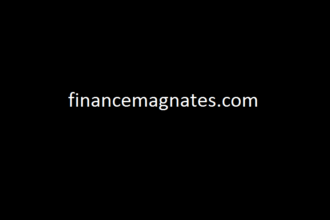Bitcoin (BTC) recovered from a low of $94,106 on Wednesday to move to its current level of $96,628. BTC retreated below $95,000 after inflation data showed inflation had risen more than economists had predicted, rattling the crypto and traditional markets. The flagship currency is down over 1% during the current session as it struggles to reach $100,000.
The crypto markets recovered after Donald Trump began negotiation calls with Russia’s Vladimir Putin and Ukraine’s Volodymyr Zelenskyy in an attempt to end the war between the two countries. Ethereum reclaimed the $2,700 level, up nearly 5%, as it inches towards $2,800. Ripple (XRP) continued its upward trajectory, up almost 3% and trading around $2.47. Solana (SOL) is marginally up as it struggles to reclaim $200, while Dogecoin (DOGE) is up nearly 4% and trading at $0.262. Cardano (ADA), Chainlink (LINK), Tron (TRX), Toncoin (TON), Shiba Inu (SHIB), Litecoin (LTC), Hedera (HBAR), and Polkadot (DOT) also registered substantial gains. The crypto market cap is up nearly 3% and currently sits at $3.22 trillion.
What Happened To Altcoin Season?
Bybit and Block Scholes, a London-based research firm, have published a report analyzing why the anticipated altcoin season is yet to take off. The report discussed previous cycles, highlighting that altcoins gained significantly thanks to massive price gains thanks to capital rotation with Bitcoin (BTC). However, the current cycle has been devoid of such movement despite BTC surging past $100,000 and setting a new all-time high of around $109,000. The report says several factors have led to the market’s current outlook. One key factor is that BTC’s halving event did not trigger the historical dip in BTC dominance. BTC’s dominance is still high despite its price struggles after setting a new all-time high, marking a departure from previous cycles.
Altcoins have also not demonstrated the kind of runs seen in 2017 and 2021, with capital rotation into other altcoins not occurring as seen in previous cycles.
“Since 2022, Ethereum has underperformed not only Bitcoin but also several competing “Ethereum Killers,” such as Solana (SOL) and Sui (SUI. This relative underperformance has raised doubts about Ethereum’s capacity to lead the market into a new alt season.”
Spot Bitcoin ETFs and institutional adoption of BTC have also complicated the crypto landscape, with investors reluctant to rotate capital into smaller tokens.
Coinbase Benefits From Strong Tailwinds
Coinbase is expected to report a Q4 revenue of $1.9 billion in the first quarter, according to H.C. Wainwright & Co. analyst Mike Colonnese. This would imply upside potential compared to the Street’s consensus estimate of $1.8 billion. The cryptocurrency exchange is expected to earn $2.21 per share during the quarter, ahead of expected numbers. Colonnese stated that strong tailwinds contributed to Coinbases’ better-than-expected results. These were due to Bitcoin crossing $90,000 and $100,000 for the first time in history, as it rallied to set a new all-time high of $109,114, indicating strong investor demand. Ethereum (ETH) also posted significant gains during the 4th quarter, rising 28% to $3,330.
Spot trading volumes across centralized exchanges were significantly high as well, with over $16 billion worth of inflows into US-based spot Bitcoin ETFs. Aggregate spot trading volumes across exchanges also registered an increase of 104% quarter-over-quarter to $8.7 trillion. The analyst added that Coinbase expects to benefit from the ongoing momentum, with the exchange expected to generate a revenue of $7.25 billion in 2025, up from previous estimates of $5.3 billion.
Donald Trump Nominates Jonathan Gould To Lead The OCC
US President Donald Trump has nominated former crypto executive Jonathan Gould to head the Office of the Comptroller of the Currency (OCC). The White House submitted Gould’s nomination to the Senate on February 11. If confirmed, Gould will be the Comptroller of the Currency for five years. Gould was the Chief Legal Officer at blockchain infrastructure firm Bitfury and is currently a partner at the law firm Jones Day. He has served as the OCC’s senior deputy comptroller and chief counsel from 2018 to 2021 and was a director at BlackRock before that.
The OCC supervises and regulates all US national banks that are part of the Federal Reserve System, including major banks like JPMorgan Chase and Bank of America. The crypto community was happy with Gould’s nomination, with Kristen Smith, CEO of the crypto advocacy body the Blockchain Association, calling him an excellent choice for Comptroller of the Currency. Avichal Garg, co-founder of investment firm Electric Capital, called Gould’s nomination a positive development for fintech and crypto founders looking for better access to financial services.
Gould had stated in a March 2023 testimony before a House Financial Services Digital Assets Subcommittee hearing on the Biden administration’s approach to crypto that regulatory action could have a chilling effect on the ability of banks to engage with crypto and reduce their willingness to engage with digital asset entities as customers. The nomination comes when the Trump administration is examining the possibility of merging the Federal Deposit Insurance Corporation (FDIC) into the Treasury or combining its role with the OCC. Gould’s nomination is the latest in a string of nominees with close ties to the crypto industry.
Bitcoin (BTC) Price Analysis
Bitcoin (BTC) is down nearly 2% during the ongoing session after hotter-than-expected inflation numbers impacted market risk sentiment. US inflation rose more than expected in January, adversely impacting crypto and stock markets. The Consumer Price Index (CPI) rose 0.5% for the month, higher than the predicted 0.3% and accelerating from December’s 0.4% increase. The CPI rose 3.0% annually, slightly higher than the anticipated 2.9%. Meanwhile, core CPI numbers rose 0.4% in January, higher than the projected 0.3%, while doubling December’s 0.2% increase. Core inflation hit 3.3% year-over-year, surpassing predictions of 3.1% and rising from 3.2% the previous month.
The higher-than-expected numbers reinforce Federal Reserve Chair Jerome Powell’s stance that further rate cuts are unlikely unless the economy and inflation take an unexpected turn. Higher interest rates can adversely impact crypto prices by lowering risk appetite and making assets like BTC less attractive to investors. However, if the Trump administration continues to push policies supporting the crypto ecosystem, it could boost investor sentiment and trigger a rally despite the possibility of one or no rate cuts in 2025.
BTC has been confined within a trading range, extending between $96,000 and $100,000 over the past few sessions as it struggles to shake off its sluggishness and push beyond $100,000. After last Monday’s impressive recovery, BTC was back in the red on Tuesday, falling 3.54% to slip below the 50-day SMA and settle at $97,983, but not before dropping to an intraday low of $96,218. Sellers retained control on Wednesday as BTC fell 1.345 to $96,668. Buyers attempted a recovery on Thursday as BTC reached an intraday high of $99,211. However, it lost momentum after reaching this level and settled at $96,641. BTC briefly crossed $100,000 on Friday, reaching $100,222 before dropping to $96,634.
Source: TradingView
Price action was muted over the weekend as BTC registered a marginal increase on Saturday and a marginal decline on Sunday to settle at $96,526. Buyers returned to the market on Monday, and BTC registered a rise of just under 1% to move to $97,468. BTC attempted to move past the 50-day SMA on Tuesday, rising to an intraday high of $98,497. However, it lost momentum after reaching this level and fell nearly 2% to $95,901. BTC plummeted to an intraday low of $94,106 on Wednesday. It recovered from this level to register an increase of 2.17% and settle at $97,881. The current session sees BTC down nearly 2% and trading just above $96,000.
BTC faces immediate resistance around $98,000, with the next level at $100,000. If BTC closes above $100,000, it could move to $105,000 over the next few sessions. However, bears are still eying $90,000. If BTC slips below $96,000, it could decline to $94,000. A break below this level could drive BTC to $90,000. The RSI and MACD are bearish, indicating sellers have the upper hand.
Ethereum (ETH) Price Analysis
Ethereum (ETH) is back in the red after rising to $2,796 on Wednesday, an increase of over 5%. ETH has dropped considerably over the past few weeks, and while its decline has slowed, the possibility of further downside remains. ETH experienced a significant crash after falling below the 200-day SMA on February 2, dropping as low as $2,174 last Monday. Meanwhile, Ethereum whales have withdrawn over 224,410 ETH from exchanges. The exodus occurred on February 8 and 9 and is the largest net outflow in nearly two years. The withdrawal has led to intense speculation about ETH’s price action in the near future.
“There was a historic milestone of ~224,410 ETH moving away from exchanges in the 24 hours between February 8th and 9th. This was the most amount of net coins moving off of known exchange wallets in a single day in 23 months..”
After recovering on Monday, ETH was back in the red on Tuesday, dropping over 5% to $2,732. The price recovered on Wednesday, rising just over 2% and settling at $2,789. Sellers returned on Thursday as ETH fell nearly 4% to $2,688. Buyers attempted a recovery on Friday as ETH rose to an intraday high of $2,798. However, it lost momentum after reaching this level and dropped 2.42% to $2,623. ETH remained relatively muted over the weekend, registering a marginal increase on Saturday and a marginal decline on Sunday to settle at $2,628.
Source: TradingView
ETH recovered on Monday to register an increase of 1.30% and settle at $2,663. However, it was back in the red on Tuesday, dropping 2.25% to $2,603. Bullish sentiment returned on Wednesday, and ETH rose over 5% to reach an intraday high of $2,796 before settling at $2,739. The current session sees ETH down just over 2%, slipping below $2,700 and trading at $2,674. If ETH slips below $2,600, it could drop to $2,500, where buyers are expected to step in and prop up the price. A break below this level could drag ETH to $2,200. On the other hand, if buyers retake the session, ETH could push back above $2,700. However, it must retake $3,000 for bullish sentiment to return.
Solana (SOL) Price Analysis
Solana (SOL) has declined after slipping below $200 on Tuesday as buyers struggle to build momentum and retake key levels. After a strong recovery last Monday, SOL was back in the red on Tuesday, dropping 4.51% to slip below the 50-day SMA and settle at $206. Sellers retained control on Wednesday as SOL fell over 5%, going below $200 and settling at $196. SOL attempted a recovery on Thursday as it reached an intraday high of $204. However, it lost momentum after reaching this level and dropped 3.31% to $189. Buyers returned to the market on Friday as SOL surged to an intraday high of $203 before settling at $192, an increase of 1.34%.
Source: TradingView
Bullish sentiment intensified on Saturday as SOL rose nearly 4% and settled at $199. The price experienced volatility on Sunday as sellers attempted to prevent a move to $200. Buyers ultimately gained the upper hand as SOL registered a marginal increase and settled at $200. Buyers and sellers struggled to establish control on Monday as SOL continued to experience volatility. As a result, it reached an intraday high of $209 and fell to an intraday low of $196 before settling back at $200. Sellers retained control on Tuesday as SOL fell 1.24% to $198. The price fell to an intraday low of $188 on Wednesday as sellers attempted to drive SOL to $180. However, it recovered from this level to settle at $196, a drop of 0.61%. The current session sees SOL down over 2% and trading at $192. If sellers retain control, SOL could drop to $180, where buyers are expected to step in. On the other hand, if buyers regain control of the session, SOL will look to reclaim $200.
Cardano (ADA) Price Analysis
Cardano (ADA) registered a substantial increase after Grayscale filed for a brand new Cardano ETF to be listed on the New York Stock Exchange (NYSE). ADA soared 15% following the news, surging to an intraday high of $0.821. If the ETF is greenlit the Grayscale Cardano Trust Ticker will offer traditional investors a seamless way to gain exposure to ADA. The application is a significant milestone for ADA, primarily because ETF discussions have generally been dominated by BTC and ETH. ADA’s inclusion indicates a growing interest in the token and other altcoins.
ADA fell sharply after Monday’s recovery, dropping over 8% to $0.744 on Tuesday. Sellers retained control on Wednesday and Thursday as the price dropped 1.61% and 3.69%, settling at $0.705. ADA registered a marginal increase on Friday, rising 0.43% to $0.708. Sellers were back in control on Saturday as ADA dropped nearly 1% to $0.701. Bearish sentiment intensified on Sunday as ADA dropped almost 3%, falling to a low of $0.651 before settling at $0.681.
Source: TradingView
Sentiment changed on Monday as ADA started the week with an increase of 4.55% and moved to $0.712. Bullish sentiment intensified on Tuesday following news about Grayscale’s ADA ETF application. As a result, ADA surged to an intraday high of $0.821 before settling at $0.778, an increase of over 9%. Buyers retained control on Wednesday as ADA rose nearly 3% to $0.80. However, with sellers active at this level, ADA is down just over 2% during the current session and trading at $0.784.
NEAR Protocol (NEAR) Price Analysis
NEAR Protocol (NEAR) has been trading between $3 and $3.50 since plunging over 10% on Tuesday and settling at $3.39. The drop came after an impressive recovery on Monday that saw NEAR rebound from $2.74 and settle at $3.77. Sellers retained control on Wednesday as NEAR dropped 3.49% and settled at $3.27. The price continued to drop Thursday, falling just over 4% and settling at $3.14. Friday saw a recovery as NEAR rebounded to reach an intraday high of $3.40 before settling at $3.20. Buyers retained control on Saturday, and the price rose 2.59% to $3.28.
Source: TradingView
NEAR encountered volatility on Sunday as buyers and sellers struggled to establish control. Sellers ultimately gained the upper hand, and NEAR dropped over 3% and settled at $3.19. Price action was muted on Monday and Tuesday as NEAR registered marginal increases and settled at $3.21. Buyers took control on Wednesday, and NEAR rose nearly 7% and settled at $3.42. The current session sees NEAR down just over 3% and trading at $3.32.
Aptos (APT) Price Analysis
Aptos (APT) is struggling to recover after last Monday’s decline. Although APT recovered on Monday and registered an increase of nearly 6%, it fell back in the red on Tuesday, dropping 6.52% to $6.08. The price continued to drop on Wednesday, declining almost 2% to slip below $6 and settle at $5.97. Bearish sentiment intensified on Thursday, and APT dropped over 4% to $5.73. Buyers attempted a recovery on Friday as APT surged to an intraday high of $6.25. However, it lost momentum after reaching this level and dropped to $5.71.
Source: TradingView
Sentiment changed over the weekend as APT rose 2.40% on Saturday and just over 1% on Sunday to settle at $5.90. An increase of 4.65% on Monday saw APT reclaim $6 and settle at $6.18. However, the price fell on Tuesday, dropping nearly 5% and settling at $5.89. Buyers returned to the market on Wednesday as APT rose 4.52% to reclaim $6 and settle at $6.15. The current session sees APT marginally down and trading at $6.15 as sellers look to drive it below $6. The MACD and RSI have flipped to bullish, indicating buyers have the upper hand. Buyers will look to push APT above the 20-day SMA and towards $7.
Jupiter (JUP) Price Analysis
Jupiter (JUP) trades between $0.75 and the 50-day SMA as buyers struggle to move beyond the resistance at around $0.90. JUP surged to an intraday high of $1.07 on Tuesday after last Monday’s dramatic recovery. However, it could not stay at this level, dropping just over 4% to settle at $0.966. Bearish sentiment intensified on Wednesday as JUP fell nearly 9%, slipping below the 20, 50, and 200-day SMAs and settling at $0.887. JUP continued to drop on Thursday, falling over 6% and settling at $0.827. Buyers attempted a recovery on Friday as JUP rose to an intraday high of $0.878. However, it lost momentum after reaching this level and dropped 3.38% to settle at $0.799.
Source: TradingView
JUP recovered on Saturday, registering an increase of just over 5% and moving to $0.839. Sunday saw considerable volatility as buyers and sellers struggled to establish control. Sellers ultimately gained the upper hand as JUP dropped nearly 15 and settled at $0.831. The current week began with volatility persisting, and JUP ultimately registered a marginal decline to settle at $0.830. Buyers attempted a recovery on Tuesday as JUP reached an intraday high of $0.875 before settling at $0.823. JUP dropped to an intraday low of $0.785 on Wednesday as selling pressure intensified. However, it recovered from this level to register an increase of 4.25% and settled at $0.858. The current session sees JUP down just over 2% and trading at $0.840.
Disclaimer: This article is provided for informational purposes only. It is not offered or intended to be used as legal, tax, investment, financial, or other advice.
Crypto Daily™ – Read More










